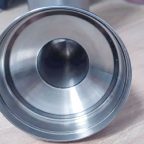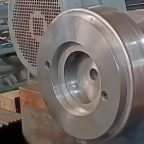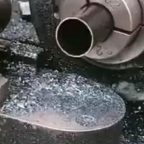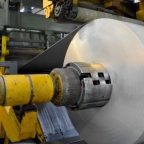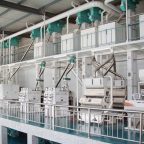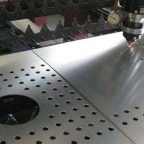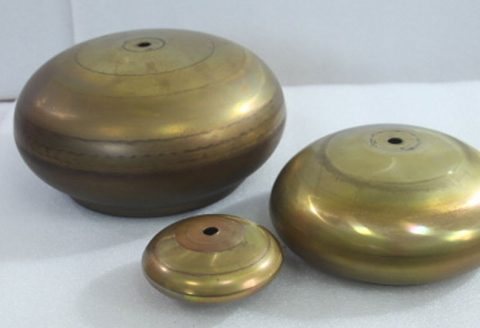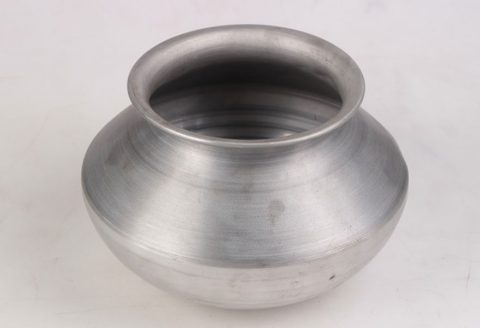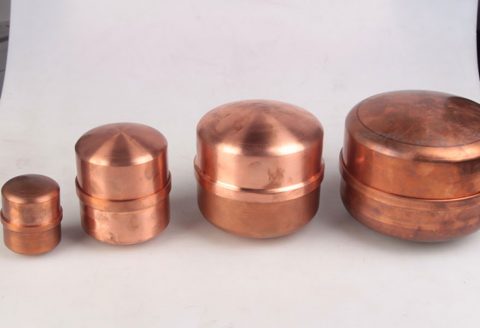
Aluminum spinning, a metal-forming process used to create axisymmetric components, is widely employed in industries such as aerospace, automotive, and manufacturing due to the material’s lightweight properties, high strength-to-weight ratio, and excellent corrosion resistance. Spinning involves rotating a metal blank or tube on a mandrel while applying localized pressure with a roller to form complex shapes, such as cylindrical or conical parts. However, the cyclic loading experienced by these components in service often leads to fatigue failure, a critical concern in applications requiring high durability and reliability. Fatigue, defined as the progressive and localized structural damage that occurs when a material is subjected to cyclic loading, is a primary cause of failure in aluminum spinning parts, particularly in high-performance environments.
Recent advancements in material science and engineering have focused on improving the fatigue performance of aluminum spinning parts through various strategies, one of which is equivalent strain control. Equivalent strain control refers to a methodology that accounts for the cumulative effect of multiaxial stresses and strains on a material’s fatigue life, providing a more accurate prediction of failure under complex loading conditions. This approach integrates strain-based fatigue models, surface treatment techniques, and process optimization to mitigate crack initiation and propagation, ultimately enhancing the durability of spun aluminum components. This article explores the mechanisms underlying fatigue performance improvement in aluminum spinning parts under equivalent strain control, delving into material properties, processing techniques, modeling approaches, and experimental validations. It aims to provide a comprehensive understanding of the current state of research and its implications for industrial applications.
Fatigue in Aluminum Spinning Parts
Understanding Fatigue in Materials
Fatigue in materials science is characterized by the initiation and propagation of cracks under cyclic loading, often at stress levels below the material’s yield strength. For aluminum alloys, fatigue failure typically involves three stages: crack initiation, crack propagation, and final fracture. Crack initiation often occurs at stress concentrators, such as surface defects, inclusions, or microstructural heterogeneities. In spinning parts, these concentrators can arise from surface roughness, residual stresses, or localized plastic deformation introduced during the forming process. Crack propagation follows, where the crack grows incrementally with each loading cycle, producing characteristic striations on the fracture surface. The final stage involves rapid crack growth, leading to catastrophic failure when the crack reaches a critical size.
Aluminum alloys, particularly high-strength alloys like 7075 and 6061, are prone to fatigue due to their sensitivity to surface imperfections and residual stresses. In spinning, the process introduces complex stress states, including radial, tangential, and axial stresses, which can exacerbate fatigue susceptibility. The fatigue life of a component is defined as the number of cycles (Nf) it can withstand before failure, and it is influenced by factors such as stress amplitude, mean stress, material properties, and environmental conditions. Fatigue performance is often categorized into low-cycle fatigue (LCF, <10^4 cycles) and high-cycle fatigue (HCF, >10^4 cycles), with very high cycle fatigue (VHCF, >10^8 cycles) becoming increasingly relevant for components subjected to prolonged cyclic loading.
Challenges Specific to Aluminum Spinning Parts
Spinning imparts unique challenges to fatigue performance due to the nature of the process. The deformation during spinning is non-uniform, leading to variations in wall thickness, residual stresses, and microstructural changes across the component. For example, multi-pass spinning, commonly used to form deep cylindrical parts, can introduce work hardening and residual stresses that affect fatigue life. These residual stresses, if compressive, can enhance fatigue resistance by counteracting tensile stresses during cyclic loading. However, tensile residual stresses can accelerate crack initiation and reduce fatigue life.
Additionally, surface integrity, including roughness and subsurface defects, plays a critical role in fatigue performance. The spinning process can introduce surface scratches, indentations, or wrinkles, which act as stress concentrators. The interaction of process parameters, such as mandrel speed, feed rate, and roller geometry, further complicates the fatigue behavior of spun parts. For instance, higher feed rates can increase wall thickness but may also introduce defects that compromise fatigue life.
Equivalent strain control addresses these challenges by considering the cumulative effect of multiaxial strains, which are prevalent in spinning due to the complex deformation paths. By modeling the equivalent strain, researchers can predict fatigue life more accurately and optimize process parameters to minimize defects and residual stresses.
Equivalent Strain Control: Concepts and Principles
Definition and Importance
Equivalent strain control is a strain-based approach to fatigue life prediction that accounts for the combined effect of normal and shear strains under multiaxial loading conditions. Unlike stress-based models, which rely on nominal stresses, equivalent strain models incorporate plastic and elastic strain components, making them suitable for low-cycle and high-cycle fatigue regimes. The equivalent strain (ε_eq) is typically calculated using a von Mises or Tresca criterion, which transforms multiaxial strain states into a single scalar value for comparison with uniaxial fatigue data. The general form of the von Mises equivalent strain is:
[ \varepsilon_{eq} = \sqrt{\frac{2}{3} \left( \varepsilon_x^2 + \varepsilon_y^2 + \varepsilon_z^2 + \frac{1}{2} \left( \gamma_{xy}^2 + \gamma_{yz}^2 + \gamma_{zx}^2 \right) \right)} ]
where (\varepsilon_x, \varepsilon_y, \varepsilon_z) are the normal strains, and (\gamma_{xy}, \gamma_{yz}, \gamma_{zx}) are the shear strains. This approach is particularly relevant for spinning parts, where the material experiences complex strain paths due to the rotational and translational motion of the roller.
The importance of equivalent strain control lies in its ability to account for mean strain and stress effects, which are critical in asymmetric loading cycles common in automotive and aerospace applications. By incorporating surface roughness and temperature correction coefficients, equivalent strain models improve prediction accuracy, especially for aluminum alloys subjected to variable amplitude loading.
Application in Fatigue Life Prediction
Equivalent strain control is often integrated with strain-life models, such as the Manson-Coffin and Smith-Watson-Topper (SWT) models, to predict fatigue life. The Manson-Coffin model relates the strain amplitude ((\varepsilon_a)) to the number of cycles to failure (Nf):
[ \varepsilon_a = \frac{\sigma_f’}{E} (2N_f)^b + \varepsilon_f’ (2N_f)^c ]
where (\sigma_f’) is the fatigue strength coefficient, (E) is the Young’s modulus, (b) is the fatigue strength exponent, (\varepsilon_f’) is the fatigue ductility coefficient, and (c) is the fatigue ductility exponent. The SWT model modifies this approach by incorporating mean stress effects:
[ \sigma_{max} \varepsilon_a = \frac{(\sigma_f’)^2}{E} (2N_f)^{2b} + \sigma_f’ \varepsilon_f’ (2N_f)^{b+c} ]
where (\sigma_{max}) is the maximum stress. These models are particularly effective for aluminum alloys under equivalent strain control, as they account for both elastic and plastic strain contributions.
In spinning parts, equivalent strain control is used to optimize process parameters to minimize strain localization and residual stresses. Finite element analysis (FEA) is commonly employed to simulate the spinning process and predict strain distributions, enabling researchers to identify critical regions prone to fatigue failure.
Mechanisms for Improving Fatigue Performance
Surface Treatment Techniques
Surface treatments are critical for enhancing the fatigue performance of aluminum spinning parts by improving surface integrity and introducing compressive residual stresses. Several techniques have been investigated, including:
Surface Mechanical Rolling Treatment (SMRT)
SMRT involves rolling a hard tool over the surface of the component to induce plastic deformation, creating a gradient grain structure and compressive residual stresses. For aluminum alloy 7075-T651, SMRT has been shown to improve tensile properties and fatigue resistance by forming a gradient grain layer with a thickness of approximately 550 μm. The grain size decreases from 5 μm in the interior to 300 nm at the surface, increasing microhardness from 180 HV to 260 HV. This gradient structure reduces strain localization and shifts fatigue crack initiation from the surface to the interior at lower stress levels, significantly enhancing fatigue life.
Vibratory Stress Relief (VSR)
VSR uses controlled vibrations to redistribute residual stresses in spun components. For aluminum alloy 7075 thin-walled parts, VSR has been shown to improve shape stability and reduce residual stresses, leading to more uniform stress distributions. Experimental studies have demonstrated that VSR can enhance fatigue life by mitigating tensile residual stresses introduced during spinning.
Shot Peening
Shot peening bombards the surface with small spherical media, inducing compressive residual stresses and work hardening. This technique is effective for aluminum alloys, as it improves surface hardness and reduces the likelihood of crack initiation. Studies have shown that shot peening can increase the fatigue life of aluminum spinning parts by up to 20% by counteracting tensile stresses.
Microstructure Design and Optimization
Microstructure design plays a pivotal role in enhancing fatigue performance. Aluminum alloys, particularly 7xxx-series alloys, exhibit poor fatigue strength due to strain partitioning to precipitate-free zones (PFZs). An innovative approach involves designing microstructures that exploit the mechanical energy of early fatigue cycles to induce dynamic precipitation, healing weak points in the microstructure. This method has been shown to improve the fatigue life of high-strength aluminum alloys by up to 25 times, raising the fatigue strength to approximately half the tensile strength.
For spinning parts, microstructure optimization can be achieved through:
- Heat Treatment: Processes like solution heat treatment and aging (e.g., T6 temper for 7075 alloys) enhance the formation of strengthening precipitates, such as Mg-Zn phases, which reduce dislocation mobility and improve fatigue resistance. Peak-aged AA7021 alloy, for instance, exhibits a 65% increase in hardness and a 50–80 MPa increase in tensile strength compared to solution-treated conditions, leading to improved VHCF performance.
- Grain Refinement: Techniques like friction stir processing (FSP) refine grain structures, increasing dislocation density and reducing crack initiation sites. FSP on AA5083 alloys has been shown to enhance fatigue life by promoting dynamic recrystallization and Zener pinning.
Process Parameter Optimization
Optimizing spinning process parameters is crucial for controlling equivalent strain and minimizing defects. Key parameters include:
- Mandrel Speed: Higher mandrel speeds (e.g., 500 rpm) reduce radial and tangential spinning forces, minimizing strain localization and improving forming quality.
- Feed Rate: Lower feed rates (e.g., 1 mm/rev) reduce wall thickness deviation and surface defects, enhancing fatigue life.
- Roller Geometry: A larger roller fillet radius (e.g., 6 mm) and an optimal angle of attack (e.g., 35°) reduce spinning forces and improve surface integrity.
Finite element simulations using software like MSC Simufact.Forming have been used to study the influence of these parameters on equivalent plastic strain and stress distributions, providing insights into defect formation and fatigue performance.
Strain-Based Fatigue Models
Advanced fatigue models, such as the improved equivalent strain (IES) model, incorporate surface roughness and temperature correction coefficients to enhance prediction accuracy. The IES model has demonstrated reduced standard deviations in fatigue life predictions for aluminum alloys under various strain ratios, outperforming traditional models like Manson-Coffin and SWT. For example, the IES model achieved standard deviations of 0.0936, 0.0721, and 0.0636 for strain ratios of -0.06, 0.06, and 0.5, respectively, indicating high precision.
These models are particularly effective for spinning parts, where complex strain paths necessitate a comprehensive understanding of multiaxial fatigue behavior. The Brown-Miller criterion, which considers shear and normal strains on the critical plane, has also been applied to aluminum alloys under multiaxial loading, providing a robust framework for fatigue life prediction.
Experimental Validation and Case Studies
Experimental Methods
Experimental studies on aluminum spinning parts typically involve fatigue testing under controlled conditions, such as tension-compression, bending, and torsion. Strain gauges are used to measure micro-strains at critical locations, providing data for validating FEA models. For example, strain gauges placed at 1/4, 1/2, and 3/4 lengths of a spun aluminum plate have been used to monitor strain during VSR, confirming reduced residual stresses and improved fatigue life.
Fatigue tests are often conducted using standards like ASTM E8, which includes strain rate control to ensure accurate measurement of mechanical properties. Ultrasonic fatigue testing at 20 kHz has been used to study VHCF behavior, revealing that peak-aged aluminum alloys exhibit higher stress amplitudes than solution-treated alloys.
Case Study: Aluminum Alloy 7075 Thin-Walled Parts
A study on 7075-T651 aluminum alloy thin-walled parts demonstrated the effectiveness of VSR in improving fatigue performance. The experimental setup involved quenching, machining, VSR, and natural aging, with strain gauges monitoring deformation during vibration. Results showed a significant reduction in residual stresses and improved shape stability, leading to a 15–20% increase in fatigue life compared to untreated parts. FEA simulations confirmed that VSR redistributed stresses uniformly, reducing the likelihood of crack initiation.
Case Study: SMRT on 7075-T651 Alloy
SMRT applied to 7075-T651 alloy parts resulted in a gradient grain structure and compressive residual stresses, increasing fatigue life by up to 30% under HCF conditions. The transition from surface to internal crack initiation at stress levels below 420 MPa was a key mechanism for fatigue strengthening, as it delayed crack propagation.
Comparative Analysis
The following tables summarize the effects of various mechanisms on fatigue performance, based on experimental and computational studies:
Table 1: Comparison of Surface Treatment Effects on Fatigue Life
| Treatment | Alloy | Fatigue Life Improvement | Mechanism | Key Findings | Source |
|---|---|---|---|---|---|
| SMRT | 7075-T651 | Up to 30% (HCF) | Gradient grain structure, compressive residual stresses | Shifts crack initiation to interior at low stress | |
| VSR | 7075 | 15–20% | Residual stress redistribution | Improves shape stability, uniform stress distribution | |
| Shot Peening | 6061 | Up to 20% | Compressive residual stresses, surface hardening | Reduces surface crack initiation |
Table 2: Effect of Process Parameters on Spinning Forces and Fatigue Life
| Parameter | Optimal Value | Effect on Spinning Force | Effect on Fatigue Life | Source |
|---|---|---|---|---|
| Mandrel Speed | 500 rpm | Minimizes radial/tangential forces | Reduces strain localization, improves life | |
| Feed Rate | 1 mm/rev | Reduces force and defects | Enhances surface integrity, extends life | |
| Roller Fillet Radius | 6 mm | Lowers spinning forces | Minimizes surface defects, improves life | |
| Roller Angle | 35° | Optimizes force distribution | Reduces stress concentrations |
Table 3: Fatigue Life Prediction Models
| Model | Key Features | Accuracy (Standard Deviation) | Applicability | Source |
|---|---|---|---|---|
| IES | Includes surface roughness, temperature correction | 0.0636–0.0936 | Multiaxial loading, aluminum alloys | |
| Manson-Coffin | Strain-based, elastic/plastic components | 0.1–0.15 | LCF and HCF | |
| SWT | Accounts for mean stress | 0.08–0.12 | Asymmetric cycles | |
| Brown-Miller | Critical plane approach | 0.09–0.14 | Multiaxial fatigue |
Computational Modeling and Simulation
Finite Element Analysis (FEA)
FEA is a cornerstone of fatigue analysis for spinning parts, enabling researchers to simulate strain distributions, residual stresses, and defect formation. Software like MSC Marc/Mentat and Simufact.Forming are used to model the spinning process, incorporating material properties (e.g., Young’s modulus, Poisson’s ratio) and boundary conditions. For example, simulations of a 3103 aluminum alloy deep cylinder showed that a ten-pass spinning process with optimized parameters reduced equivalent plastic strain and improved wall thickness uniformity, enhancing fatigue life.
FEA models also validate experimental data by comparing simulated strain distributions with strain gauge measurements. In a study of an aluminum cross beam, FEA simulations accurately predicted stress peaks below the fatigue limit (89 MPa), confirming no fatigue damage under typical operating conditions.
Multiaxial Fatigue Models
Multiaxial fatigue models, such as the Brown-Miller criterion, are critical for spinning parts due to the complex strain paths involved. These models consider the maximum shear strain and normal strain on the critical plane, providing a more accurate prediction of fatigue life under combined loading. The Brown-Miller criterion is expressed as:
[ \frac{\gamma_{max}}{2} + k \varepsilon_n = C ]
where (\gamma_{max}) is the maximum shear strain, (\varepsilon_n) is the normal strain, and (k) and (C) are material constants. This approach has been validated for aluminum alloys 2017A and 6082 under cyclic bending and torsion, showing strong correlation with experimental fatigue lives.
Future Directions and Challenges
Emerging Trends
Recent research has highlighted several emerging trends in improving fatigue performance under equivalent strain control:
- Additive Manufacturing Integration: Combining spinning with additive manufacturing (AM) to create hybrid components with tailored microstructures could further enhance fatigue resistance. AM allows for precise control of defect distribution, which can be optimized for fatigue performance.
- Artificial Intelligence (AI): AI-based models for fatigue life prediction are gaining traction, offering the ability to analyze complex datasets from spinning processes and predict fatigue life with high accuracy.
- Nanostructuring: Incorporating nanoparticles or nanoceramics into aluminum alloys during spinning could enhance grain refinement and fatigue resistance, as demonstrated in Al-Mg alloys.
Challenges
Despite these advancements, several challenges remain:
- Defect Control: Controlling defects like wrinkles and surface scratches during multi-pass spinning is critical for fatigue performance but remains difficult due to the complex interplay of process parameters.
- Model Versatility: Current fatigue models may not fully capture the effects of variable amplitude loading and environmental factors, requiring further development.
- Cost and Scalability: Advanced surface treatments like SMRT and VSR are effective but may be cost-prohibitive for large-scale production, necessitating cost-effective alternatives.
Conclusion
Improving the fatigue performance of aluminum spinning parts under equivalent strain control is a multifaceted challenge that requires integrating material science, process optimization, and advanced modeling. Surface treatments like SMRT and VSR, microstructure design, and optimized process parameters have been shown to significantly enhance fatigue life by reducing residual stresses, refining grain structures, and minimizing defects. Strain-based models, such as the IES and Brown-Miller criteria, provide accurate predictions of fatigue life under complex loading conditions, supported by FEA and experimental validations. Future research should focus on integrating emerging technologies like AM and AI, addressing defect control, and developing cost-effective solutions to ensure the widespread adoption of these mechanisms in industrial applications. By leveraging these strategies, the durability and reliability of aluminum spinning parts can be significantly improved, meeting the stringent demands of aerospace, automotive, and other high-performance industries.
Maximize Tooling and CNC Metal Spinning Capabilities.

At BE-CU China Metal Spinning company, we make the most of our equipment while monitoring signs of excess wear and stress. In addition, we look into newer, modern equipment and invest in those that can support or increase our manufacturing capabilities. Our team is very mindful of our machines and tools, so we also routinely maintain them to ensure they don’t negatively impact your part’s quality and productivity.
Talk to us today about making a rapid prototype with our CNC metal spinning service. Get a direct quote by chatting with us here or request a free project review.
BE-CU China CNC Metal Spinning service include : CNC Metal Spinning,Metal Spinning Die,Laser Cutting, Tank Heads Spinning,Metal Hemispheres Spinning,Metal Cones Spinning,Metal Dish-Shaped Spinning,Metal Trumpet Spinning,Metal Venturi Spinning,Aluminum Spinning Products,Stainless Steel Spinning Products,Copper Spinning Products,Brass Spinning Products,Steel Spinning Product,Metal Spinnin LED Reflector,Metal Spinning Pressure Vessel,
